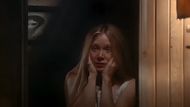Horror TV series and films often tend to raise a debate amongst the readers of the original novels. Books may be more effective at internal tension and psychological depth, but a screen adaptation may alter an ending to create a story that is more emotionally or visually engaging.
Astonishingly, we have numerous instances where horror TV series and films have provided more solid or better endings than the novels themselves. These adaptations made artistic risk-taking that led to memorable, even shocking endings.
But what changes unhooked this accomplishment? The solution can be found in a few excellent horror TV and films that changed the resolution of their sources, transforming ambiguity or cynicism into drama or cinematic horror. Whether it is Stephen King classics or other streaming hits, all these stories prove that screen versions can even be better than the original.
Here are 5 horror TV show and movie adaptations that delivered a better ending than the OG novels
1. The Mist (2007)

The Mist by Stephen King leaves with a question mark: the people who have survived in the world are driving somewhere, and there is a bit of hope of finding a shelter through a faint radio signal. The film by Frank Darabont in 2007, however, opted to take a more shocking and conclusive ending.
David Drayton thinks he has no hope any longer, so he shoots his friends, including his son, but soon he is rescued. This nauseating ending is commonly quoted as an emotionally more powerful ending than the open-ended one of the novel. This ending, though bleak, gave the story a devastating finality that the book avoided. Many critics and fans argue that this cinematic choice left a stronger emotional impact than King’s intentionally ambiguous close.
2. Carrie (1976)

Carrie by Stephen King concludes with a lot of destruction and aftermath, which is narrated in epistolary style, which may be remote and disjointed. The 1976 adaptation by Brian De Palma toned down the narrative and centered on the prom confrontation of the title character, Carrie.
The movie finale, with the famous hand-out-of-the-grave dream scene, increased the tension and emotional appeal. This short, graphically shocking epilogue provided the viewers with a better feeling of resolution and horror. This also shows that a well-thought-out reconsideration of the endings in horror TV series and films can frequently have a greater effect than the rambling novel-length endings.
3. The Haunting of Hill House (2018)
When it comes to horror TV shows, Netflix’s The Haunting of Hill House demonstrates how adaptations can reimagine endings to great effect. The Netflix series adaptation by Mike Flanagan made the story a family saga, with a mix of psychological horror and the issues of trauma and reconciliation.
The final episode of this horror TV series gives the remaining siblings of Crain the opportunity to deal with their past and close the emotional wounds but preserve the sense of horror that the house evokes. The show achieved a balance between fear and catharsis as opposed to the original novel, which depicted a more nuanced and emotionally fulfilling resolution by demonstrating how horror television series can utilize their format to unveil the inner lives of characters.
4. I Am Legend (2007)
Few horror TV shows and movies have sparked as much debate as I Am Legend. Richard Matheson’s 1954 novel flips the script by revealing Robert Neville to be the “monster” in the eyes of the infected, ending with a commentary on perspective and survival. The 2007 movie featuring Will Smith chose a more heroic and easier-to-digest ending: Neville dies to save his people, and this creates a hopeful ending.
Although a different ending exists that is more in line with what Matheson originally produced, the film version focused on individual heroism and self-sacrifice, which would be appealing to the average viewer. This proves that horror TV programs and movies, at times, enhance the ending of a novel by conforming it to the emotional and narrative anticipation of the audience.
5. The Shining (1980)
The Shining by Stanley Kubrick was a stark departure from Stephen King's novel. The resolution to the story is that the Overlook Hotel blows up, and the Torrance family survives. In the movie, however, Kubrick confines Jack in a hedge maze where he dies frozen to death, leaving the hotel standing, and concludes with the creepy picture of Jack in a 1921 photograph.
The ambiguous, chilling ending of this horror TV show underlines both the supernatural wickedness of the hotel and the mental breakdown of its protagonist, Jack, and forms one of the most iconic and disturbing endings in horror films. The transformation demonstrates that horror television shows and films can reconstruct source material in the best way to capitalize on the atmosphere and fear.
Why do these adaptations work better?
Horror television shows and films regularly re-continue endings to suit the capabilities of the visual narrative. Novels are great in the aspect of internal tension and narrative complexity, whereas films and series have to provide a memorable emotional punch.
An unquestioned twist, visual jolt, or emotional denouement may render a story more relatable to viewers. The Mist, Carrie, The Haunting of Hill House, I Am Legend, and The Shining all show that modifications to endings can improve the effect without disregarding the intent of the source.
Though novels continue to be the backbone of classic horror, these illustrations explain how television and movies on horror can enhance the stories by providing a reimagined ending. By transforming ambiguity into clarity or bleakness into emotional appeal or suspense into unforgettable scenes, these adaptations demonstrate that the final acts can be rewritten to provide memorable experiences.
When approached well, a screen adaptation may at times come out more permanently than the original book did.
Also read: 5 action thriller shows so good that you'll think of binge-watching from the very first episode
